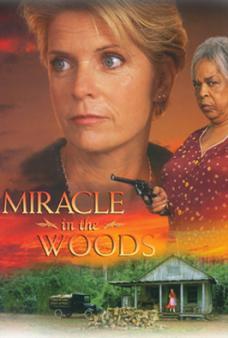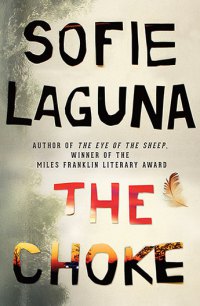There’s a new company that just started up this year called Restoration Games. Their mission is to find older games, tweak them to bring them up to modern design standards, and rerelease them into the wild. The company is the brainchild of Justin D. Jacobson and Rob Daviau, and so far has been getting lots of positive buzz. They’ve recently launched with three games, with more on the way (Fireball Island was announced at Gen Con last week). So, let’s take a look.
 image by BGG user JustinDJacobson
image by BGG user JustinDJacobson
Downforce is a reimplementation of Top Race, published in 1996 and designed by none other than Wolfgang Kramer. Actually, the system can be traced back to Tempo, which was Kramer’s first game, published in 1974. That was kind of an abstract system that evolved into Niki Lauda’s Formel 1 (1980), Formel 1 Nürburgring (1985), Daytona 500 (1990), and Detroit-Cleveland Grand Prix (1986). Downforce is a racing game that incorporates bidding and betting into its gameplay.
The game begins with an auction for players to collect cars. Cards have several racing lines of different colors on them, and players will be using the lines that are the same color as the driver up for bid to determine how much money they want to spend. The winner gets the driver and a special power. Once all six cars have been claimed by someone (everyone will get at least one and possibly more), this phase ends and drivers (speed 8) are added to their hand. You’ll keep only one power card available.
On your turn, you play a card, then advance each car shown the number of spaces indicated. The cars must be moved in order. Whenever the first car crosses a betting line, all players will secretly bet on who they think will win. There are three betting lines, so you’ll be able to make three bets, each with diminishing returns for being correct.
Once all cars have crossed the finish line, you award payouts to owners for finishing in 1st-5th place (6th gets NOTHING). You also get cash for having correct bets (1st-3rd), but you’ll have to subtract money from the initial auction from your final score. The player with the most money wins.
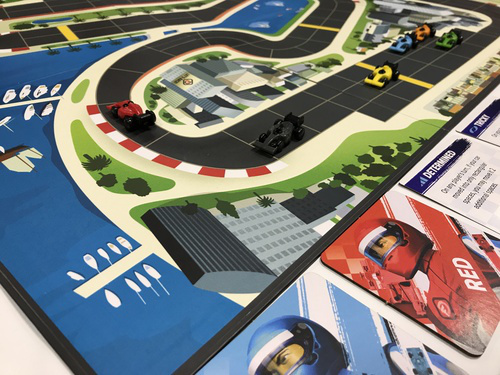 image by BGG user jayahre
image by BGG user jayahre
I have played Daytona 500 once before, and looking back at my notes, I was kind of meh about it. I’m not really a racing fan, and I’m definitely not an auction fan. However, this is one I think I’d probably give a try. It seems like fun, and the components look great. People really seem to be loving it as well.
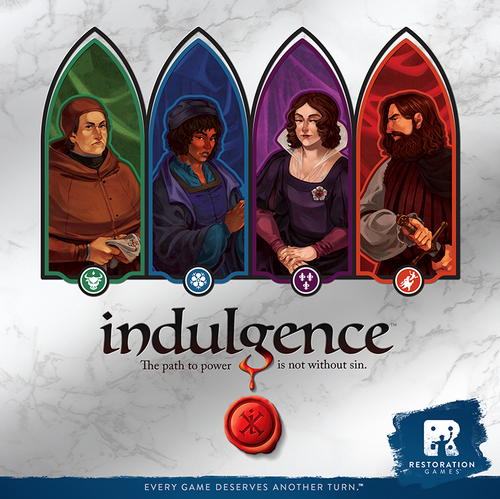 image by BGG user JustinDJacobson
image by BGG user JustinDJacobson
Indulgence began its life as Barbu, a French game from the early 20th century. Designer Jerry D’Arcey adapted it to Coup d’Etat in 1980, and it was reimagined again to Dragonmaster in 1981. In this version, players take turns being the Ruler that chooses a sin other players may not commit. If they do, they’ll have to pay the Ruler.
In each round, one player will be the Ruler (every one will get an equal number of turns to be Ruler) and will choose one of three Edicts to be in play. These Edicts give various rules that must not be broken, and range from not being able to take cards of a certain suit to not being able to take certain tricks of the hand. The Ruler chooses the Edict after cards for the round have been dealt out. However, once the Edict has been passed, other players will, in turn order, decide if they want to Sin. The first player that does flips the Edict to its Sin side, and now must do exactly what he was told not to.
Play then proceeds like a normal trick-taking game. The first player leads, and everyone must follow suit if they are able. The highest card in the led suit wins the trick. There’s no trump in the game – except for one. The Sinning player gets an Indulgence, which is a ring. If he plays this on top of a card he plays, it immediately becomes a 10 of the played suit (normally, cards only go up to 9). An Indulgence can only be used once per round.
At the end of the hand, players pay the Ruler florins for not following the Edict. If you chose to Sin and succeeded, other players pay you. If you failed, you pay the Ruler. The Ruler then passes around the table. Once everyone has been Ruler three times in the game, it’s over and the player with the most florins wins.
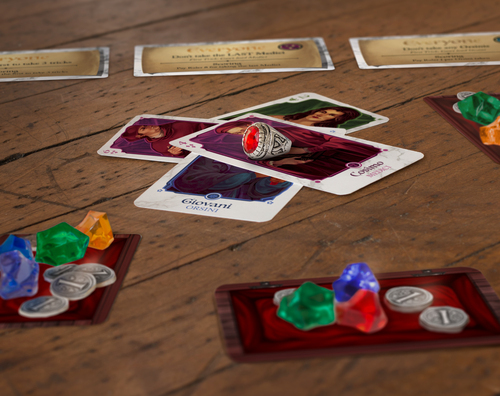 image by BGG user JustinDJacobson
image by BGG user JustinDJacobson
Of the initial three Restoration Games, I think this one is the one I’m most interested in. Trick-taking seems to be taking off lately, and this one looks like a fun twist. It probably owes a lot to Hearts – you’re either trying to incur as few penalties as possible, or you’re trying to shoot the moon. The pieces in this game look phenomenal – there’s a ring in the game, for crying out loud.
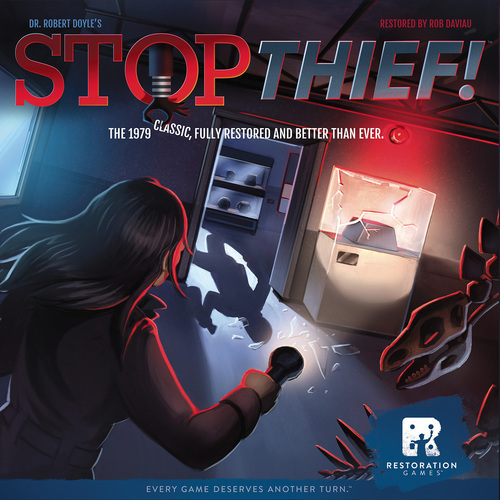 image by BGG user JustinDJacobson
image by BGG user JustinDJacobson
Stop Thief! is the restoration of a 1979 game designed by Robert Doyle. It was a precursor to games like Scotland Yard in that a thief is secretly running around the board. What made it so novel for the time was that the thief was controlled by an Electronic Crime Scanner. So you know a crime has been committed, but you don’t know where thief is, and you have to zero in on his position to make an arrest. In the Restoration Games version, the Electronic Crime Scanner has been replaced by a free app.
At the start of the game, players will get $3000 and start in the center space. The app will tell you where the crime was committed (one of four large zones on the board) and have you draw a thief card so you know who you’re after. On your turn, you have three steps to complete. First, GET A CLUE by pressing the corresponding button on the app. It will play a sound to tell you where the thief currently is – an alarm for the crime scene, footsteps for inside a building, a muffled speaker for the subway, a creak for a door, breaking glass for a window, and hubbub for outside the building. This step represents where the thief moved to, though sometimes the thief will not move.
The next thing you do is PLAY A CARD, which is simply where you take a card from your hand and play it. This will give you a number of spaces to move and possibly a special effect. Finally, if you think you’re on the same space as the Thief or adjacent to him/her, you can ATTEMPT AN ARREST. Simply tell the other players and the app where you think he or she is, and the app will tell you whether or not you’re right. If you’re right, collect the reward and move on to the next crime. Once someone reaches the target money amount (which is different depending on the number of players), they win.
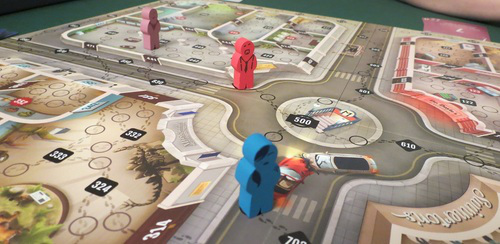 image by BGG user The Innocent
image by BGG user The Innocent
As I mentioned, this game was kind of a precursor to games like Scotland Yard in that there are detectives trying to deduce the secret movement of a crook. However, SY is a one-vs-all game, where Stop Thief! is an everyone-for-themselves game, and the thieves aren’t going to win – eventually, someone will track them down and win the game. It looks like a really fun game, and one that I think would give Clue a run for its money as the go-to deduction game if it ever hits mass market.
Restoration Games is one of the most exciting new companies out there, and I’m very much looking forward to seeing what they come out with next. There are certainly a lot of classics out there that could use restoration – I’m guessing Dark Tower and Omega Virus are in their future, and I think they could probably mine a lot of ideas from the Flip the Table archives as well.
That will do it today – thanks for reading!
SaveSaveSaveSave
SaveSave
Advertisements Share:


